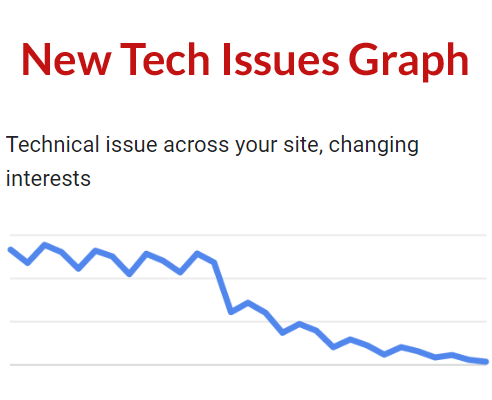SEO
27-Year Search Expert Shares 5 Steps To Boost Your SEO

In a recent Yext Summit, 27-year search marketing expert Duane Forrester shared advice on how to become a better SEO and develop the skills to better anticipate where search marketing is headed.
Who Is Duane Forrester And Why His Advice Matters
Duane Forrester is one of the rare search marketers who has experience on both sides of the search box. He has 27 years of experience in the search industry with almost ten of those years spent as a Product Manager at Microsoft. He helped build and launch Bing Webmaster Tools, wrote the original Bing Webmaster Guidelines and worked with the Core Search and Spam Teams, as well as the teams who built and maintained Schema.org, Robotstxt.org and Sitemaps.org.
Five Steps To Become A Better SEO & Predict Future Trends
Duane said that in 2022 nobody was talking about AI. Now it’s been just over a year and it’s all that everyone is talking about. He said that’s an example of how SEO is one of the fastest changing industries and said that this has always been the normal pace.
What’s going on in AI is just another change in a history of changes, not all of it visible to the search community. Machine learning, neural networks, and AI have been a part of Search behind the scenes for many years, largely unseen and not always well understood, which underlines the importance of learning.
Duane said:
“…this industry requires a dedication to continual learning. All the time, there’s always something new. …Big steps, small steps, but it is constant.”
He suggested the following activities for attaining a strong SEO footing and maintaining it.
- Research 60 minutes per day
- Follow known experts
- Use official sources for SEO guidance
- The value of developer resources
- Anticipate consumer trends
1. Research 60 Minutes Per Day
Duane recommended setting aside time for research.
He explained:
“…dedicate at least 60 minutes a day, an hour, to reading new sources and the official blogs, heck even the unofficial blogs, get in and read those things.”
For some it might sound like a lot of time to dedicate to researching something that they already know, SEO. But Duane is right and I’ll tell you why.
In 2005 I was caught by surprise when a Google engineer revealed that Google was using statistical analysis to identify unnatural links. It was a mind blowing moment that made it clear I had to start reading research papers to stay on top of the search engines were doing.
I contacted Duane about it and he said that now more than ever it’s important to research everything because SEO is changing so fast that at some point it might be inadequate to call it SEO anymore.
This is what he told me:
“Man, if things keep going the way they are, we will ALL need to learn a new profession. It simply won’t be called SEO if it’s on the front edge of what’s coming.
Bottom line, if you’re not investing in the work now, there is not going to be a tomorrow. Sorry, this train is stopping. A new train will be departing the station shortly – I suggest you get on it.”
2. Follow Known Experts
Duane asserts that it’s important to keep an open mind and absorb what others have to say. It’s consider that this is a person with 27 years experience who is saying how important it is for him to read what others are saying. So if it’s important for him it should be important for everyone else.
Duane recommends:
“Follow known experts on Twitter and LinkedIn threads, Bluesky, TikTok, wherever they have an account, go find it. If it’s on medium, sign up. If it’s on Substack sign up.
Make sure you’re getting direct access. You don’t want to rely on what someone said they read. Go read these things yourself. It makes a big difference in your understanding. Listen to the podcasts, watch the webinars, follow their YouTube channels and acknowledge you will be drinking from a fire hose.”
3. Use Official Sources For SEO Guidance
Duane emphasized the importance of getting as much information direct from the search engines. For the normal sources of official information (Search Central, Developer blog, Webmaster Tools) he said to keep those bookmarked and ready to be checked every day. But he also advised to expand your sources of information to sources most people don’t go to.
This is what he said about alternative sources:
“So for SEOs, you wanna be looking for Microsoft, Google, DuckDuckGo, Yahoo, Baidu, and Naver. And before you say, but why Yahoo? It’s because they’re doing a lot over the last year with search and they are poised to do even more in the next 18 months. So pay attention to what they’re doing. They’re not investing in this because they don’t think there’s a reason to do so. They very much believe there is room for them in this market, and I bet consumers will agree with them.”
4. The Value Of Developer Resources
This part of his keynote is interesting because it’s about looking at where the industry is going to be 18 months in the future. Part of engaging with developer resources is understanding the technology but he also sees it as an opportunity to get ahead of everyone else by seeing where the consumers are going (because the money will follow them).
Duane recommended developer-focused resources at Meta, Amazon, Apple, TikTok, OpenAI because those are the companies that are developing the customer experiences that impact consumer behavior. He has a point. Shein revolutionized how clothing is marketed by sidestepping search altogether by targeting consumers on social media in ways that appealed to them.
Duane said:
“I also urge you take a look at what’s going on for developers, and there’s a very important reason for this. META, Amazon, Apple, TikTok, OpenAI, they all have dedicated locations for developers to come in and engage with our latest products and services…
The reason it’s important to pay attention to this is because these are the companies that are developing the customer experiences and understand how those customer experiences impact customer action and behavior. These are the official sources where those experiences are rolled out, talked about, and developers can engage with them.”
5. Anticipate Consumer Trends
One of the things that I found interesting was how he kept returning to how technology affects the customer experience and their behavior. When he talks about Apple or Meta it’s in the context of how they’re influencing customer behavior he also ties that to how money follows the consumers.
For example, in our conversation he mentioned the prospect of an ad-free AI search and said that we have to think about where that advertising money is going to go.
“This is leaning towards “staying on top of your game” and we have to talk about how “search” is being expanded across new platforms (ChatGPT, Perplexity, etc.).
So knowing how they’re thinking about business models and such becomes a very important part of the game. If ChatGPT launches an ad-free search experience, and their current consumers adopt it (100 million active monthly users), how does this affect current search models built on top of advertising? How does this affect how teams are tasked with work inside of brands, which skills are in demand, where does ad money move to?”
Do you see what he’s doing there? He’s looking at technological trends today and then thinking where it is headed and how that affects which jobs will be in demand and where advertising and consumer spending is headed.
I’ve known Duane for almost twenty years and he’s always doing that kind of thing where he puts context on what’s happening now and what it means for the future. Those questions he asks show how to anticipate where the industry is headed .
His Yext keynote ended with a hockey analogy:
“You do not want to skate to where the puck is. You want to skate to where the puck is going to be. The greatest hockey players who have ever played the sport knew that and acted on it every time they took to the ice.
Skating to where the puck is is a sure way to miss the point and fall behind. Skating to where it will be is how you stay in front and on top of things. And you can get there by being curious, learning continuously and building a robust network.”
Watch Duane Forresters’s keynote:
How to Keep Up with SEO Best Practices
Featured Image by Shutterstock/Artem Samokhvalov
SEO
Studio By WordPress & Other Free Tools

WordPress announced the rollout of Studio by WordPress, a new local development tool that makes it easy for publishers to not just develop and update websites locally on their desktop or laptop but is also useful for learning how to use WordPress. Learn about Studio and other platforms that are make it easy to develop websites with WordPress right on your desktop.
Local Development Environments
Local Environments are like web hosting spaces on the desktop that can be used to set up a WordPress site. They’re a fantastic way to try out new WordPress themes and plugins to learn how they work without messing up a live website or publishing something to the web that might get accidentally indexed by Google. They are also useful for testing if an updated plugin causes a conflict with other plugins on a website, which is useful for testing updated plugins offline before committing to updating the plugins on a live website.
Studio joins a list of popular local development environments that are specific for WordPress and more advanced platforms that are that can be used for WordPress on the desktop but have greater flexibility and options but may be harder to use for non-developers.
Desktop WordPress Development Environments
There are currently a few local environments that are specific to WordPress. The advantages of using a dedicated WordPress environment is that they make it easy to start creating with WordPress for those who only need to work with WordPress sites and nothing more complicated than that.
Studio By WordPress.com
Studio is an open source project that allows developers and publishers to set up a WordPress site on their desktop in order to design, test or learn how to use WordPress.
According to the WordPress announcement:
“Say goodbye to manual tool configuration, slow site setup, and clunky local development workflows, and say hello to Studio by WordPress.com, our new, free, open source local WordPress development environment.
Once you have a local site running, you can access WP Admin, the Site Editor, global styles, and patterns, all with just one click—and without needing to remember and enter a username or password.”
The goal of Studio is to be a simple and fast way to create WordPress sites on the desktop. It’s currently available for use on a Mac and a Windows version is coming soon.
Download the Mac version here.
Other Popular WordPress Local Development Environments
DevKinsta
DevKinsta, developed by Kinsta managed web host, is another development environment that’s specifically dedicated for quickly designing and testing WordPress sites on the desktop. It’s a popular choice that many developers endorse.
That makes it a great tool for publishers, SEOs and developers who just want a tool to do one thing, create WordPress sites. This makes DevKinsta a solid consideration for anyone who is serious about developing WordPress sites or just wants to learn how to use WordPress, especially the latest Gutenberg Blocks environment.
Download DevKinsta for free here.
Local WP
Local WP is a popular desktop development environment specifically made for WordPress users by WP Engine, a managed WordPress hosting provider.
Useful Features of Local WP
Local WP has multiple features that make it useful beyond simply developing and testing WordPress websites.
- Image Optimizer
It features a free image optimizer add-on that optimizes images on your desktop which should be popular for those who are unable to optimize images on their own. - Upload Backups
Another handy feature is the ability to upload backups to Dropbox and Google Drive. - Link Checker
The tool has a built-in link checker that scans your local version of the website to identify broken links. This is a great way to check a site offline without using server resources and potentially slowing down your live site. - Import & Export Sites
This has the super-handy ability to import WordPress website files and export them so that you can work on your current WordPress site on your desktop, test out new plugins or themes and if you’re ready you can upload the files to your website.
Advanced Local Development Environments
There are other local development environments that are not specific for WordPress but are nonetheless useful for designing and testing WordPress sites on the desktop. These tools are more advanced and are popular with developers who appreciate the freedom and options available in these platforms.
DDEV with Docker
An open source app that makes it easy to use the Docker software containerization to quickly install a content management system and start working, without having to deal with the Docker learning curve.
Download DDEV With Docker here.
Laragon
Laragon is a free local development environment that was recommended to me by someone who is an advanced coder because they said that it’s easy to use and fairly intuitive. They were right. I’ve used it and have had good experiences with it. It’s not a WordPress-specific tool so that must be kept in mind.
Laragon describes itself as an easy to use alternative to XXAMPP and WAMP.
Mamp
Mamp is a local development platform that’s popular with advanced coders and is available for Mac and Windows.
David McCan (Facebook profile), a WordPress trainer who writes about advanced WordPress topics on WebTNG shared his experience with MAMP.
“MAMP is pretty easy to setup and it provides a full range of features. I currently have 51 local sites which are development versions of my production sites, that I use for testing plugins, and periodically use for new beta versions of WordPress core. It is easy to clone sites also. I haven’t noticed any system slowdown or lag.”
WAMP And XAMPP
WAMP is a Windows only development environment that’s popular with developers and WordPress theme and plugin publishers.
XAMPP is a PHP development platform that can be used on Linux, Mac, and Windows desktops.
So Many Local Development Platforms
Studio by WordPress.com is an exciting new local development platform and I’m looking forward to trying it out. But it’s not the only one so it may be useful to try out different solutions to see which one works best for you.
Read more about Studio by WordPress:
Meet Studio by WordPress.com—a fast, free way to develop locally with WordPress
Featured Image by Shutterstock/Wpadington
SEO
Big Update To Google’s Ranking Drop Documentation

Google updated their guidance with five changes on how to debug ranking drops. The new version contains over 400 more words that address small and large ranking drops. There’s room to quibble about some of the changes but overall the revised version is a step up from what it replaced.
Change# 1: Downplays Fixing Traffic Drops
The opening sentence was changed so that it offers less hope for bouncing back from an algorithmic traffic drop. Google also joined two sentences into one sentence in the revised version of the documentation.
The documentation previously said that most traffic drops can be reversed and that identifying the reasons for a drop aren’t straightforward. The part about most of them can be reversed was completely removed.
Here is the original two sentences:
“A drop in organic Search traffic can happen for several reasons, and most of them can be reversed. It may not be straightforward to understand what exactly happened to your site”
Now there’s no hope offered for “most of them can be reversed” and more emphasis on understanding what happened is not straightforward.
This is the new guidance
“A drop in organic Search traffic can happen for several reasons, and it may not be straightforward to understand what exactly happened to your site.”
Change #2 Security Or Spam Issues
Google updated the traffic graph illustrations so that they precisely align with the causes for each kind of traffic decline.
The previous version of the graph was labeled:
“Site-level technical issue (Manual Action, strong algorithmic changes)”
The problem with the previous label is that manual actions and strong algorithmic changes are not technical issues and the new version fixes that issue.
The updated version now reads:
“Large drop from an algorithmic update, site-wide security or spam issue”
Change #3 Technical Issues
There’s one more change to a graph label, also to make it more accurate.
This is how the previous graph was labeled:
“Page-level technical issue (algorithmic changes, market disruption)”
The updated graph is now labeled:
“Technical issue across your site, changing interests”
Now the graph and label are more specific as a sitewide change and “changing interests” is more general and covers a wider range of changes than market disruption. Changing interests includes market disruption (where a new product makes a previous one obsolete or less desirable) but it also includes products that go out of style or loses their trendiness.

Change #4 Google Adds New Guidance For Algorithmic Changes
The biggest change by far is their brand new section for algorithmic changes which replaces two smaller sections, one about policy violations and manual actions and a second one about algorithm changes.
The old version of this one section had 108 words. The updated version contains 443 words.
A section that’s particularly helpful is where the guidance splits algorithmic update damage into two categories.
Two New Categories:
- Small drop in position? For example, dropping from position 2 to 4.
- Large drop in position? For example, dropping from position 4 to 29.
The two new categories are perfect and align with what I’ve seen in the search results for sites that have lost rankings. The reasons for dropping up and down within the top ten are different from the reasons why a site drops completely out of the top ten.
I don’t agree with the guidance for large drops. They recommend reviewing your site for large drops, which is good advice for some sites that have lost rankings. But in other cases there’s nothing wrong with the site and this is where less experienced SEOs tend to be unable to fix the problems because there’s nothing wrong with the site. Recommendations for improving EEAT, adding author bios or filing link disavows do not solve what’s going on because there’s nothing wrong with the site. The problem is something else in some of the cases.
Here is the new guidance for debugging search position drops:
“Algorithmic update
Google is always improving how it assesses content and updating its search ranking and serving algorithms accordingly; core updates and other smaller updates may change how some pages perform in Google Search results. We post about notable improvements to our systems on our list of ranking updates page; check it to see if there’s anything that’s applicable to your site.If you suspect a drop in traffic is due to an algorithmic update, it’s important to understand that there might not be anything fundamentally wrong with your content. To determine whether you need to make a change, review your top pages in Search Console and assess how they were ranking:
Small drop in position? For example, dropping from position 2 to 4.
Large drop in position? For example, dropping from position 4 to 29.Keep in mind that positions aren’t static or fixed in place. Google’s search results are dynamic in nature because the open web itself is constantly changing with new and updated content. This constant change can cause both gains and drops in organic Search traffic.
Small drop in position
A small drop in position is when there’s a small shift in position in the top results (for example, dropping from position 2 to 4 for a search query). In Search Console, you might see a noticeable drop in traffic without a big change in impressions.Small fluctuations in position can happen at any time (including moving back up in position, without you needing to do anything). In fact, we recommend avoiding making radical changes if your page is already performing well.
Large drop in position
A large drop in position is when you see a notable drop out of the top results for a wide range of terms (for example, dropping from the top 10 results to position 29).In cases like this, self-assess your whole website overall (not just individual pages) to make sure it’s helpful, reliable and people-first. If you’ve made changes to your site, it may take time to see an effect: some changes can take effect in a few days, while others could take several months. For example, it may take months before our systems determine that a site is now producing helpful content in the long term. In general, you’ll likely want to wait a few weeks to analyze your site in Search Console again to see if your efforts had a beneficial effect on ranking position.
Keep in mind that there’s no guarantee that changes you make to your website will result in noticeable impact in search results. If there’s more deserving content, it will continue to rank well with our systems.”
Change #5 Trivial Changes
The rest of the changes are relatively trivial but nonetheless makes the documentation more precise.
For example, one of the headings was changed from this:
You recently moved your site
To this new heading:
Site moves and migrations
Google’s Updated Ranking Drops Documentation
Google’s updated documentation is a well thought out but I think that the recommendations for large algorithmic drops are helpful for some cases and not helpful for other cases. I have 25 years of SEO experience and have experienced every single Google algorithm update. There are certain updates where the problem is not solved by trying to fix things and Google’s guidance used to be that sometimes there’s nothing to fix. The documentation is better but in my opinion it can be improved even further.
Read the new documentation here:
Debugging drops in Google Search traffic
Review the previous documentation:
Internet Archive Wayback Machine: Debugging drops in Google Search traffic
Featured Image by Shutterstock/Tomacco
SEO
Google March 2024 Core Update Officially Completed A Week Ago

Google has officially completed its March 2024 Core Update, ending over a month of ranking volatility across the web.
However, Google didn’t confirm the rollout’s conclusion on its data anomaly page until April 26—a whole week after the update was completed on April 19.
Many in the SEO community had been speculating for days about whether the turbulent update had wrapped up.
The delayed transparency exemplifies Google’s communication issues with publishers and the need for clarity during core updates
Google March 2024 Core Update Timeline & Status
First announced on March 5, the core algorithm update is complete as of April 19. It took 45 days to complete.
Unlike more routine core refreshes, Google warned this one was more complex.
Google’s documentation reads:
“As this is a complex update, the rollout may take up to a month. It’s likely there will be more fluctuations in rankings than with a regular core update, as different systems get fully updated and reinforce each other.”
The aftershocks were tangible, with some websites reporting losses of over 60% of their organic search traffic, according to data from industry observers.
The ripple effects also led to the deindexing of hundreds of sites that were allegedly violating Google’s guidelines.
Addressing Manipulation Attempts
In its official guidance, Google highlighted the criteria it looks for when targeting link spam and manipulation attempts:
- Creating “low-value content” purely to garner manipulative links and inflate rankings.
- Links intended to boost sites’ rankings artificially, including manipulative outgoing links.
- The “repurposing” of expired domains with radically different content to game search visibility.
The updated guidelines warn:
“Any links that are intended to manipulate rankings in Google Search results may be considered link spam. This includes any behavior that manipulates links to your site or outgoing links from your site.”
John Mueller, a Search Advocate at Google, responded to the turbulence by advising publishers not to make rash changes while the core update was ongoing.
However, he suggested sites could proactively fix issues like unnatural paid links.
“If you have noticed things that are worth improving on your site, I’d go ahead and get things done. The idea is not to make changes just for search engines, right? Your users will be happy if you can make things better even if search engines haven’t updated their view of your site yet.”
Emphasizing Quality Over Links
The core update made notable changes to how Google ranks websites.
Most significantly, Google reduced the importance of links in determining a website’s ranking.
In contrast to the description of links as “an important factor in determining relevancy,” Google’s updated spam policies stripped away the “important” designation, simply calling links “a factor.”
This change aligns with Google’s Gary Illyes’ statements that links aren’t among the top three most influential ranking signals.
Instead, Google is giving more weight to quality, credibility, and substantive content.
Consequently, long-running campaigns favoring low-quality link acquisition and keyword optimizations have been demoted.
With the update complete, SEOs and publishers are left to audit their strategies and websites to ensure alignment with Google’s new perspective on ranking.
Core Update Feedback
Google has opened a ranking feedback form related to this core update.
You can use this form until May 31 to provide feedback to Google’s Search team about any issues noticed after the core update.
While the feedback provided won’t be used to make changes for specific queries or websites, Google says it may help inform general improvements to its search ranking systems for future updates.
Google also updated its help documentation on “Debugging drops in Google Search traffic” to help people understand ranking changes after a core update.
Featured Image: Rohit-Tripathi/Shutterstock
FAQ
After the update, what steps should websites take to align with Google’s new ranking criteria?
After Google’s March 2024 Core Update, websites should:
- Improve the quality, trustworthiness, and depth of their website content.
- Stop heavily focusing on getting as many links as possible and prioritize relevant, high-quality links instead.
- Fix any shady or spam-like SEO tactics on their sites.
- Carefully review their SEO strategies to ensure they follow Google’s new guidelines.
-

 SEARCHENGINES6 days ago
SEARCHENGINES6 days agoGoogle Needs Very Few Links To Rank Pages; Links Are Less Important
-

 PPC5 days ago
PPC5 days ago10 Most Effective Franchise Marketing Strategies
-

 MARKETING7 days ago
MARKETING7 days agoHow to Use AI For a More Effective Social Media Strategy, According to Ross Simmonds
-

 PPC6 days ago
PPC6 days agoBiggest Trends, Challenges, & Strategies for Success
-

 SEARCHENGINES4 days ago
SEARCHENGINES4 days agoGoogle Won’t Change The 301 Signals For Ranking & SEO
-

 SEO6 days ago
SEO6 days agoHow to Become an SEO Lead (10 Tips That Advanced My Career)
-

 SEARCHENGINES5 days ago
SEARCHENGINES5 days agoGoogle Again Says Ignore Link Spam Especially To 404 Pages
-

 SEO3 days ago
SEO3 days agobrightonSEO Live Blog













